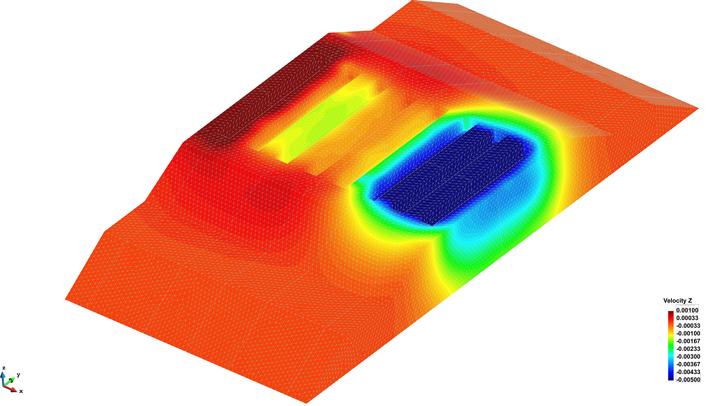Post-processing and visualization of large-scale DEM simulation data with the open-source VELaSSCo platform
 Coarse-grained results of DEM simulation of railway embankment
Coarse-grained results of DEM simulation of railway embankment
Abstract
Regardless of its origin, in the near future the challenge will not be how to generate data, but rather how to manage big and highly distributed data to make it more easily handled and more accessible by users on their personal devices. VELaSSCo (Visualization for Extremely Large-Scale Scientific Computing) is a platform developed to provide new visual analysis methods for large-scale simulations serving the petabyte era. The platform adopts Big Data tools/architectures to enable in-situ processing for analytics of engineering and scientific data and hardware-accelerated interactive visualization. In large-scale simulations, the domain is partitioned across several thousand nodes, and the data (mesh and results) are stored on those nodes in a distributed manner.
The VELaSSCo platform accesses this distributed information, processes the raw data, and returns the results to the users for local visualization by their specific visualization clients and tools. The global goal of VELaSSCo is to provide Big Data tools for the engineering and scientific community, in order to better manipulate simulations with billions of distributed records. The ability to easily handle large amounts of data will also enable larger, higher resolution simulations, which will allow the scientific and engineering communities to garner new knowledge from simulations previously considered too large to handle.
This paper shows, by means of selected Discrete Element Method (DEM) simulation use cases, that the VELaSSCo platform facilitates distributed post-processing and visualization of large engineering datasets.